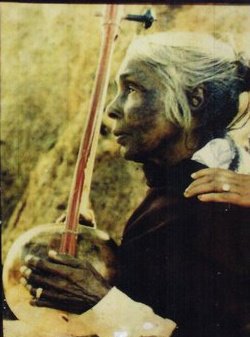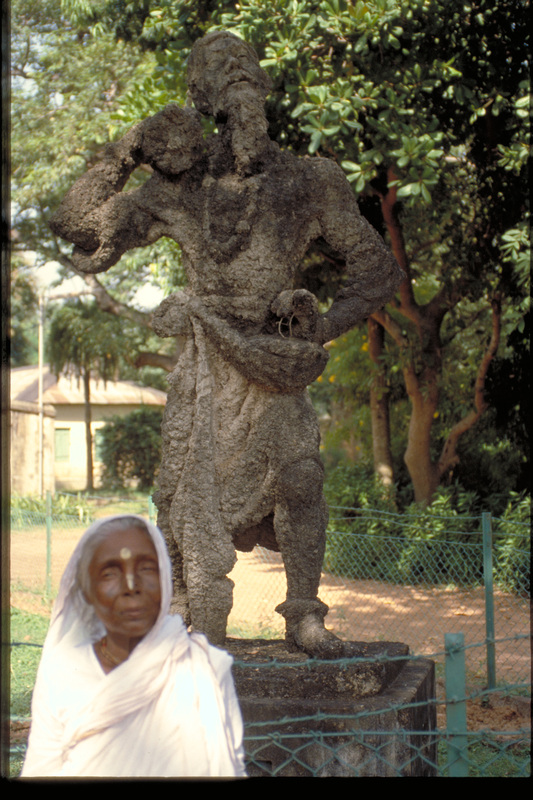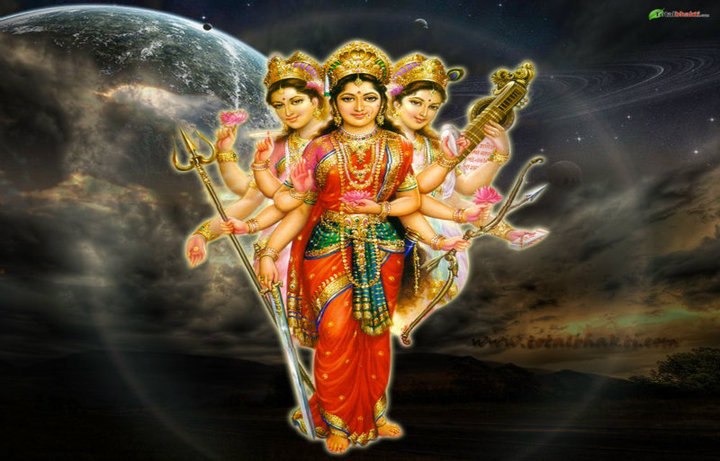
As the dragon gives way to the black snake, this year is predicted to be an exciting year of ups and downs. ‘Adopt the pace of nature; her secret is patience’ said Ralph Waldo Emerson. ‘Nagayuna’ in Indian alchemy seeks to achieve loving harmony between the physical and ethereal. In other words, all of us are striving to better ourselves by calmly easing into places of personal balance within the cosmic balance of the whole.
Snakes are a symbol of healing and primal energy. In art, the Naginis are figures of beauty. In many Hindu societies, snakes are worshipped as guardians of the home; and it is said that when a snake enters your life, there will be a new birth of creativity and wisdom. In Bengal, the Goddess Manasa, a divine Nagini, is worshipped for her powers to vanquish illness. Generally serpents live for hundreds of years and signify eternity. The Bhavishyapuran mentions heavenly serpents such as Takshak, Vasuki, Shesha and Ananta. Rig Veda 1.32.3 mentions of the killing of Vitra, the first born of Serpents. Serpent means cloud and Vitra withholds the waters in the clouds and the necessary rain. He is killed by Indra, Lord of the Gods.
LORD SIVA:
Usually venomous serpents symbolise death. For Lord Shiva, snakes are decorations. As Mrtyunjaya, he is the conqueror of death. To those who seek, Lord Siva charms like a ‘snake charmer’. The Matsya Purana depicts Lord Siva as garlanded with snakes. The Lingapurana depicts Linga with five headed hood. As Pasupathinath, Siva is the lord of all creatures. Vasuki is shown curled three times around the neck of the Lord and is looking towards His right side depicting a complete control over its behavior. It represents wisdom and eternity. He has mountains as abodes and carries nothing precious. With the flow of Ganges, the deer-skin clothes and Vasuki Naga, He symbolizes the nature of simple living. In Kailasa, snakes serve Lord Shiva as necklace, armlets and appear in his clothes. They also serve as his bowstring. According to legends, to the displeasure of Daksha, snakes found on Lord Shiva’s body became ornaments during his marriage with Parvati.
SIVALINGA HOOD:
The ShivaLinga has a canopy of a five headed snake. The Puranas enrich this symbolism. The five hoods are symbolic of the five senses or Tattvas - earth, water, fire, air and ether. Snakes are known for their hissing and thus represent the five Praanas. The Lord Himself became the five Tanmatras.
TANMATRAS:
‘Tan’ means subtle and ‘matra’ means elements. Thus ‘tanmatra’ means the five elements that manifest in the functioning of the five senses as well as in certain functions of human physiology. The serpent of Siva’s neck represents Jiva or the individual soul. He is the Paramatman or Supreme Soul. The five hoods stand for the five senses of the five Tattvas. They also represent the Pranas, which hiss in the body. The inhalation and exhalation are like the hissing of the serpent. The Lord is himself the Tanmatras, the five Jnanendriyas and the other five Karmendriyas. Another meaning of ‘tan’ is mother, and ‘matra’ also means matter — the mother of matter. The Mother of this whole world is the tanmatras. The tanmatras are in the womb of the Cosmic Mother, Prakriti. Through jnana, humans gain control over the senses, the mind and find eternal rest with the Supreme Lord.
LORD DHANWANTRI:
Lord Dhanwantri is the physician to the Gods. He studied vegetable and animals toxins as ayurveda. Ayurveda traces its source from the Atarvaveda. It is also connected to religion and mythology. He received his knowledge from Brahma, the God of Creations. Brahma gave the knowledge to Prajapati who passed it to the celestial twin physicians, Ashwini Kumari then to Dhanvantari. Ayurveda studies all venoms including snake venom. This is also connected to the chemicals of plants and fungi which have healing powers or provide expanded consciousness. Serpents have herbal knowledge, thus they are close to divinity and nature.
Dhanvantari appeared during Samudra manthan to deliver amrit. This spisode is symbolic churning of the ocean to depict endeavor of a person to achieve Self realization through concentration of senses, control of all desires, austerities and asceticism. During the churning, milk first produced a deadly poison the halahala. Only Lord Siva could swallow it. He is beyond all venoms. Indeed Siva is the oldest creator or physician of the world. It is within his confines we have two major puranic legends. They are the head transplant – Lord Ganesha and antidote of poison in the Samudra manthan. Vasuki, another serpent was the churning rope in the churning of the ocean of bliss to produce amrit.
PAST, PRESENT AND FUTURE:
This symbolism represents endless cycles of birth and regeneration. The three coils of the snake symbolize the past, present and future - time in cycles. Coiled serpents may also represent cycles of tile in the macrocosm and the basic energy. The Lord wearing the curled snake like an ornament signifies that creation proceeds in cycles and is time dependent, but the Lord Himself transcends time. The right side of the body symbolizes positivity and the human activities based upon knowledge, reason and logic. The snake looking towards the right side of the Lord signifies that the Lord's eternal laws of reason and justice preserve natural order in the universe. It also shows Siva as the master of time and energy both represented symbolically by serpents around his neck.
SARANAGATHI:
Snakes instill fear and symbolize evil and demonic quality. The garland around his neck establishes that even snakes fear the Lord and remain completely subdued under His control. He gives us the assurance that no evil can touch us or destroy us once there is ‘saranagathi’ or surrender to Him, seek His protection and worship him with deep devotion. To the Lord, snakes are simple ornaments depicting ‘abhyam’ or fearlessness. Snakes have a long life and in that sense the Lord symbolizes ‘amirtham’ or immortality.
CASTING OF SKIN:
Their casting of the skin represents immortality for being reborn. Snakes regularly moult or shed their skin. This is the symbol of rebirth, transformation, immortality and healing. Lord Siva is Eternity and continual renewal of life. Lord Shiva dissolves and recreates the universe. Like a yogi, a snake hoards nothing, carries nothing, builds nothing, lives on air alone for a long time, and lives in mountains and forests. Its divine aspect combined with its habitat is connected to afterlife and immortality.
DESIRES:
The snake also stands for all passions and desires. By wearing the snakes around his neck, Lord Siva conveys the message to all his devotees that He has overcome all desires and is in full control of Prakriti, or maya and its various machinations. Often additional snakes are depicted - one, as a sacred thread around his body, and two more, around his wrists as bracelets or his arms as armlets. Having the snakes wrapped around him suggest his control over desire and the sensual world and the lack of effect that maya or illusory world has on him. Another symbolism is that the snake on neck represents ego which once controlled can be worn as an ornament.
NILAKANTHA:
Mahavishnu, while floating on the cosmic waters, reclines on the serpent Shesha eternally. As Ananta-Shesha it holds all the planets if the universe on its hoods constantly singing the glories of Vishnu. Shesha was used as a churning rod by the Asuras and Devas to churn the ocean of milk in the heavens to make Amrita, the divine elixir of immortality. The most famous myth of Lord Shiva’s association with snakes is when he drinks the poison ‘kalakuda’ from Snake Vasuki’s mouth during the churning of ocean to get amrit. He does this for the well being of the Universe. From that day, Lord Shiva becomes blue throated and is called Nilakantha.
NAGA WORSHIP:
Goddess Manasa is said to be the queen of the snakes. Nature worship includes worship of Nagas or Nagadeva, the Snake God. Nagaraja, is the male aspect of the king of serpents; Nagakanni is the female aspect. Female snake goddess is also called Nagarani. Sometimes they are revered in their live form. Their termite nests are given a shelter and offered naivedya on auspicious days. Generally Nagaraja is a name given to the guardian of lakes and rivers. It also refers to serpent kings.
In several cultures, snakes were symbolic of strength and renewal. Nagas form an important part of Hindu mythology. Hindu temple or stone carvings depict Naga worship and offerings of food and flowers. Snakes are a symbol of healing and primal energy. Hindus invoked divinity seeking protection against serpents of the underworld believed to be responsible for death and disease.
Nagas have powerful symbolism. Nagas are representative of rebirth, death and immortality due to its symbolic casting of skin. Shesha, Vasuki, Anantha, Kaliya, Manasa, Padmanabha – guardian snake in the sourthern cultures, Astika – half Brahmin and half naga and Kulika are subject matters of Naga worship. While Naga worship is not time restricted, Naga Panchami festival takes place on the fifth day of Shravana. On this day milk, eggs and incense is offered to Naga.
NAVAGRAHAS:
Sri Rahu and Ketu are also great Snake Gods as well as planetary deities. They are described as malefic planets as they are giving great tribulations to the people in case of unfavourable horoscope positions. Rahu, in half part, was earlier known as Savarbhanu. He acquired special charachteristics as a result of churning the ocean milk. When Mohini was passing down the line of devas and giving them amrita, one of the Daitya with four arms and a tail, had slipped between Surya and Chandra to receive the amrita by trickery. Surya and Chandra discovered the fraud and summon Lord Vishnu. He cuts the asura in two with his discuss. Being recipient of the amrita the cut parts survive. The head became Rahu and trunk became Kethu. They took their place in the stellar sphere as ascending and descending nodes. But as vengeance would have it, Rahu never forgot his hatred for the sun and moon. With leave granted that on certain occasions Rahu should approach these gods and render them unclean, so that their bodies at these times become thin and black. With his mouth agape, he pursues them as a celestial serpent, in turn through the sky and sometimes catches up to swallow them, thus causing eclipse.
KUNDALINI:
The Latin term for serpent is ‘serpens’ implying a crawling snake. In Yoga, kundalini is described as a coiled up or coiled serpent lying dormant in the muladhara chakra. It is described as ‘serpent power’ lying dormant and ascends upwars when one starts his or her spiritual journey. Yoga Kundalini Upanishad 1.82 states that ‘the divine power, kundalini, shines like the stem of a young lotus; like a snake, coiled round herself she holds her tail in her mouth and lies resting half asleep as the base of the body. According to this Upanishad, Kundalini Shakti, coiled and dormant ‘feminine’ energy, is the vast potential of psychic energy contained within us all. The object of the practice of Kundalini Yoga is to awaken the serpent, Shakti. When she is ready to unfold, she ascends through the spinal chakras to unite above the crown of the head with Siva, the Pure Consciousness pervading the whole universe’.
The snake around the neck of Siva also conveys the meaning that in him the kundalini not only has arisen fully but is also actively involved in His divine activity by keeping an eye on all the devotees who approach Siva with their individual problems. The depiction of snakes along with Shiva, indicate that Shiva is the master of this cosmic energy and controls it the way he deems fit.
LORD KRISHNA:
Gita 10.28: Of weapons, I am the thunderbolt, among cows I am surabhi. Of causes for procreation, I am Kamadeva, the God of Love and of serpents I am Vasuki.
MYTHOLOGY:
Kaliya was the king of Kaliraman near Mathura. In myths, he as a poisonous Naga living in the Yamuna river. Except for a solitary kadamba tree, all living things were affected by the poison waters of the Yamuna. Kaliya coiled around Krishna when he falls into the Yamuna while climbing the kadamba tree. The Lord manifests his true self and became so huge that Kaliya had to release him. Krishna then danced on Kaliya’s head but Kaliya’s wife prayed to Krisha for his release. He was pardoned and let free.
Hara Hara Mahadeva
(draft Nature in Hindu Way of Life)
By Yogi Ananda Saraswathi


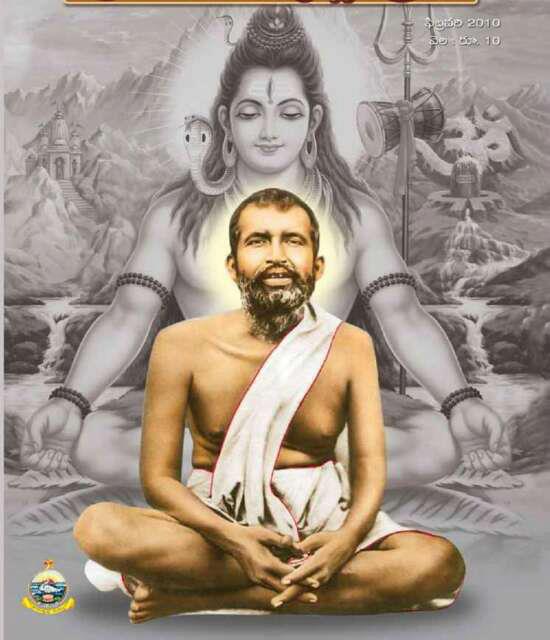

















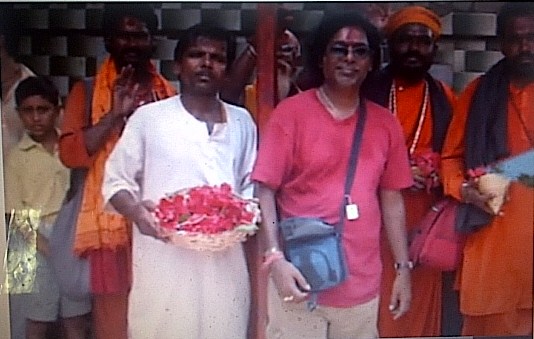




 RSS Feed
RSS Feed
